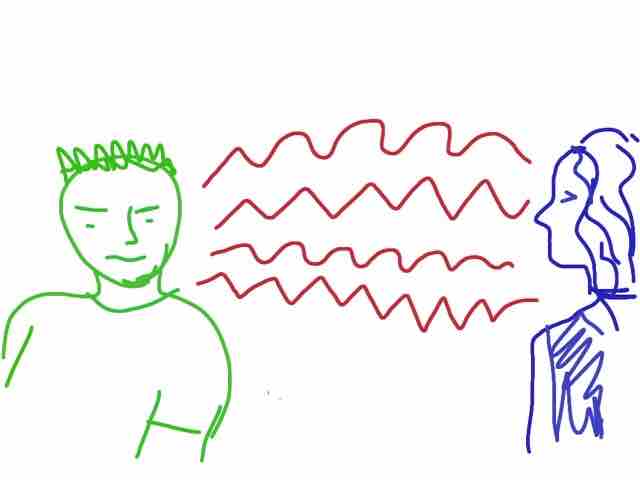The Communications Process
The most basic form of communication is a process in which two or more persons attempt to consciously or unconsciously influence each other through the use of symbols or words to satisfy their respective needs. Likewise, integrated marketing communications uses this communications process to persuade target audiences to listen and act on marketing messages. Our ability to receive, communicate, and process information from other communicators and outside stimuli enables us to perceive the advertising and promotional messages central to integrated marketing communications.

Two-way Communication
The communications process involves two or more persons exchanging words or symbols.
Audience Roles
People play different roles – friend, parent, boss, client, customer, or employee – depending on the exchange during the communications process. The nature of the role directly affects the nature of communication. Communication theory points to the fact that each communicator is composed of a series of subsystems. The input subsystem permits the communicator to receive messages and stimulus from external sources as well as from other communicators. It involves the reception of light, temperature, touch, sound, and odors via our immediate senses. These stimuli are evaluated and recognized using our ears, eyes, skin, nose, and taste buds. Thus, we input and perceive advertising messages – a television commercial or a salesperson's pitch – using this process of perception.
Thus, organizations must keep in mind the different subsystems of their target audiences when devising integrated marketing communications strategies. Companies must also consider other consumer stimuli such as past experiences, education, health, and genetics when developing communications for certain target markets. Some people may process the humor in a company advertisement more quickly than others due to factors such as age or culture.
Communication systems also exist within an environment such as a corporate office or school. The environment is everything internal and external to the communication system that can affect the system (family, school, competing advertisements, and so on). Each of the factors within the environment interacts with the communication system to a different degree. As a result, where and when consumers interact with company advertisements and promotional tools will also affect their perception of the brand.